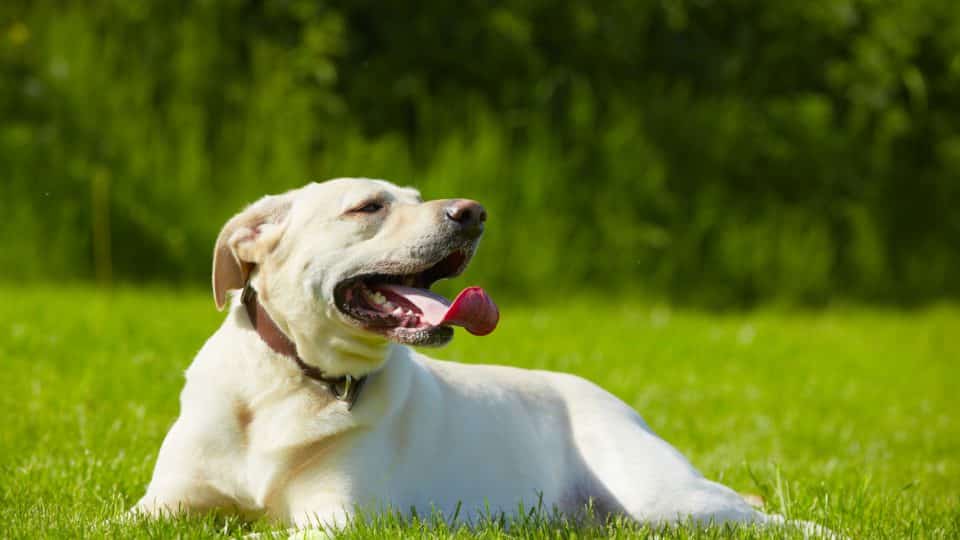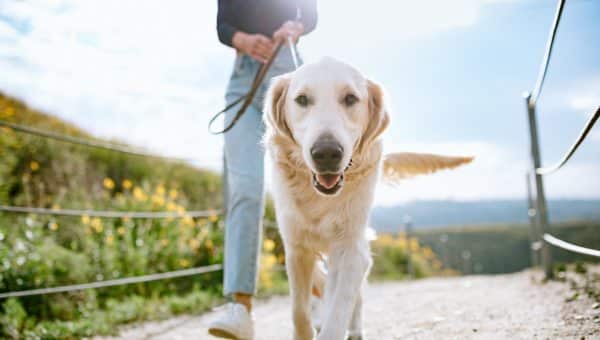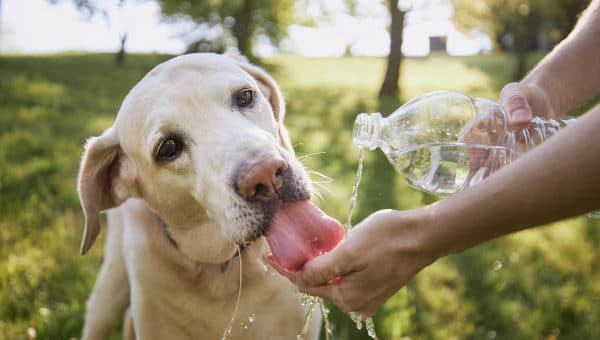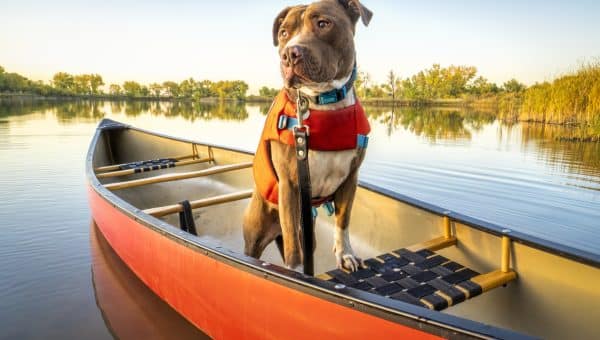- This article has been reviewed by a pet health professional. It is not a substitute for professional veterinary advice.
Heatstroke is a potentially fatal disorder for both dogs and humans. Heatstroke, or hypothermia, is medically defined as a state of extreme internal body temperature of over 106°F. Internal temperatures higher than this may result in failure of the brain and other organs.
Dogs experience heatstroke when their body is unable to remove or regulate high temperatures. If you witness any of these behaviors or signs, take your dog to a cooler area immediately and call a vet:
- Elevated breathing
- Dry gums or abnormal gum color
- Imbalance
- Seizures
Keep reading to learn about heatstroke in dogs and what to do.
10 Possible Signs of Heatstroke
According to veterinarian Dr. Rebecca Greenstein, DVM, from Rover’s Pet People Panel, these behaviors may be a sign of heatstroke:
- Heavy panting
- Rapid and/or difficulty breathing
- Increased heart rate with a bounding pulse
- Lethargy
- Lack of coordination
- Vomiting and diarrhea
- A deep red or purple colored tongue or gums
- Seizure
- Unconsciousness or collapse
- Excessive drooling/salivation
“It is important to remember that a pet can be suffering heat stroke but show only a few of these symptoms,” says Dr. Greenstein. “If your pet appears to be showing any of the above symptoms or if you suspect they may be overheating, call a veterinarian immediately and move your pet to a cool, shady space.”
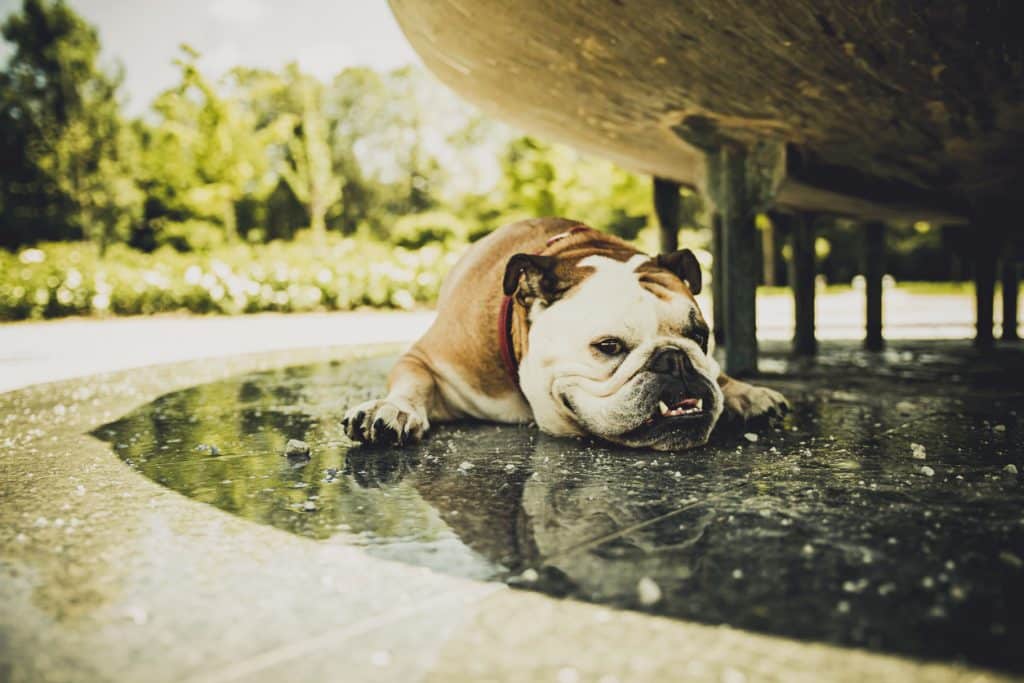
iStock/MonikaBatich
Tip: Check your dog’s gums
Dog salivation occurs as their body works harder and harder to get rid of pent-up heat. As heatstroke progresses, severe breathing distress occurs. Many dogs will seem as if they can’t catch their breath. If you flip their lips and see bright red gums or bruises on their gum or skin, find help immediately.
Signs of extreme heatstroke
Progression worsens with signs of:
- Collapse
- Seizures
- Abnormal mental states
- Damage to blood vessels in the intestines and stomach, resulting in bloody urine or diarrhea
Without help, a dog experiencing extreme heatstroke is at risk of death.
Risk Factors for Canine Heatstroke
Dogs are at a higher risk for heatstroke when they are:
- Left in parked cars
- Living in hot, humid climates
- Doing strenuous exercise in hot weather
- Not acclimated to hot weather
Certain types of dogs are also at risk for heat stroke, such as:
- Puppies
- Pregnant dogs
- Senior dogs
- Dogs with short muzzles (Pugs, Bulldogs, French Bulldogs, Pekingese, Boston Terriers, etc.)
- Dogs with thick coats (Huskies, German Shepherds, Akitas, Malamutes, etc.)
- Overweight and out-of-shape dogs
- Dogs with underlying medical issues (arthritis, heart disease, respiratory or endocrine disorders, collapsed trachea, etc.)
Treating Heatstroke in Dogs
The most important thing to do is to get the dog to the vet—any vet—quickly. As you transport your dog, focus on a slow approach to cooling. Cooling is critical, but too much cooling can also make things worse.
How to treat heatstroke in dogs:
- Get the dog out of the sun, ideally into an air-conditioned home.
- Lay the dog on a cool surface—tile flooring is great—or in a bathtub or shower since you will be wetting them down.
- Wet the dog thoroughly with cool or room-temperature water.
- Wet ear flaps and paws with cool water.
- Direct a fan on them if one is available.
- Use a rectal thermometer to monitor their temperature every few minutes.
What not to do:
- Don’t use ice or ice cold water. This causes the blood vessels in the skin to constrict, trapping heat in the body’s core, where it’s causing the most damage.
- Don’t over cool your dog. Once the rectal temperature drops to 103°F, stop the measures described above and get to the vet if you haven’t left already.
- Don’t force your dog to drink—it’s OK to have a bowl of fresh cool water available if your dog is interested in drinking on his or her own.
- Don’t leave your dog unattended for any length of time.
- Don’t take a “wait-and-see” approach. Dogs that are allowed to “sleep it off” are almost always worse later.
Once your dog reaches the veterinary hospital, the health care team will take over with more intense therapies as needed.
Why Do Dogs Get Heatstroke?
When the dog’s natural cooling mechanisms are unable to keep up with the elevation in their body temperature, heatstroke occurs. Dogs sweat mainly from their footpads, which makes sweating an ineffective method of cooling.
The hypothalamus controls a dog’s ability to regulate temperature. When a dog’s internal and external temperature increases, the hypothalamas tell the body to cool down by panting, drooling, and dilating the blood vessels for evaporation and radiation.
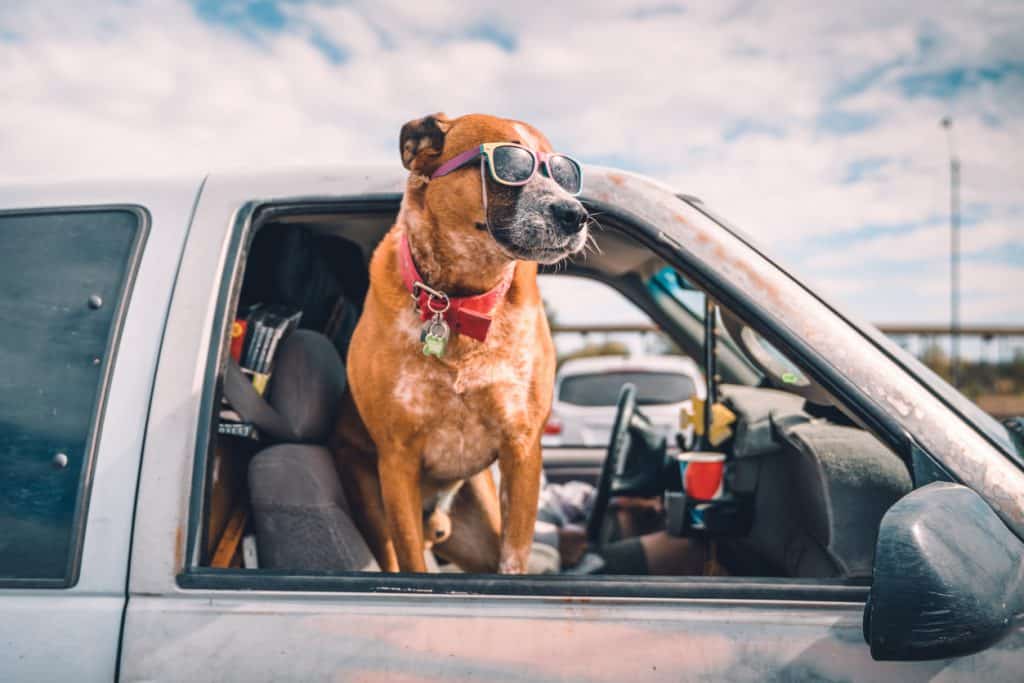
iStock/Mlenny
What Is the Prognosis for Canine Heatstroke?
Survival rates for dogs suffering from heatstroke depend on:
- How long your dog had an elevated temperature
- The degree of temperature elevation
- The amount of organ damage incurred
- The response to intensive supportive care
- Physical factors of the dog, such as age or breed
This is why experts recommend not waiting to see if your dog recovers. Any signs of heatstroke should have you taking your dog out of the heat and making your way to the vet. Recovered animals may still have some neurological deficits. In one study of 54 cases, the overall death rate was 50%.
How to Prevent Heatstroke
Heatstroke is a highly preventable condition. As long as you are aware of your dog’s risk factors, you can plan ahead and avoid any serious emergency outcomes by following the tips below:
- Never leave a dog in a parked car or other closed compartments, no matter how briefly, even with the windows open or cracked. “When it’s only 75 degrees out, temperatures inside a parked car can easily go above 100 degrees within minutes—even with the windows open. Remember, dogs don’t sweat to cool down like humans do, so it is critically important to keep them out of hot, enclosed environments like these,” Dr. Greenstein says.
- Keep pets indoors when there’s a heat advisory. If there’s a heat advisory for people, the same is true for pets.
- Never leave a dog unattended outdoors in the heat. Heatstroke can occur in less than 30 minutes depending on heat and humidity, even with access to water and shade.
- Limit outside exposure, play, and walks. “It’s important to make sure you’re choosing to exercise your pet during cooler times of day,” Dr, Greenstein says. “Shifting walks to happen earlier in the morning and later in the evening and opting to walk for shorter distances along shady routes will help protect your dog from overheating. Bringing along a collapsible bowl and a doggie water bottle is also a must-do to ensure your pet stays hydrated.”
- Be aware of how humidity impacts the heat index in your area. The heat index is the combined impact of both temperature and humidity and can give you a better idea of what the outside temperature is actually like. Do not allow strenuous exercise such as running or chasing the ball outdoors during extreme heat or humidity.
- Protect paws with booties or walk on non-paved surfaces. “When walking your dog, avoid asphalt and hot pavement and instead walk on grass or dirt, if possible,” Dr. Greenstein says. “Remember, asphalt can quickly become blisteringly hot. When the air temperature is just 77℉, asphalt can be upwards of 125℉. And even one degree increase in air temperature can mean a huge jump in asphalt surface temperature. For example: When it’s 86℉ outside, asphalt can be 135℉. If the temperature rises to 87℉, the asphalt can jump to 143℉. A good rule of thumb is that if the ground is too hot for your bare feet, it’s too hot for your pet’s paws.”
Take the heat off your pet with proper preventive measures. The dog days of summer can be an enjoyable time for all, as long as you stay cool and safe.
